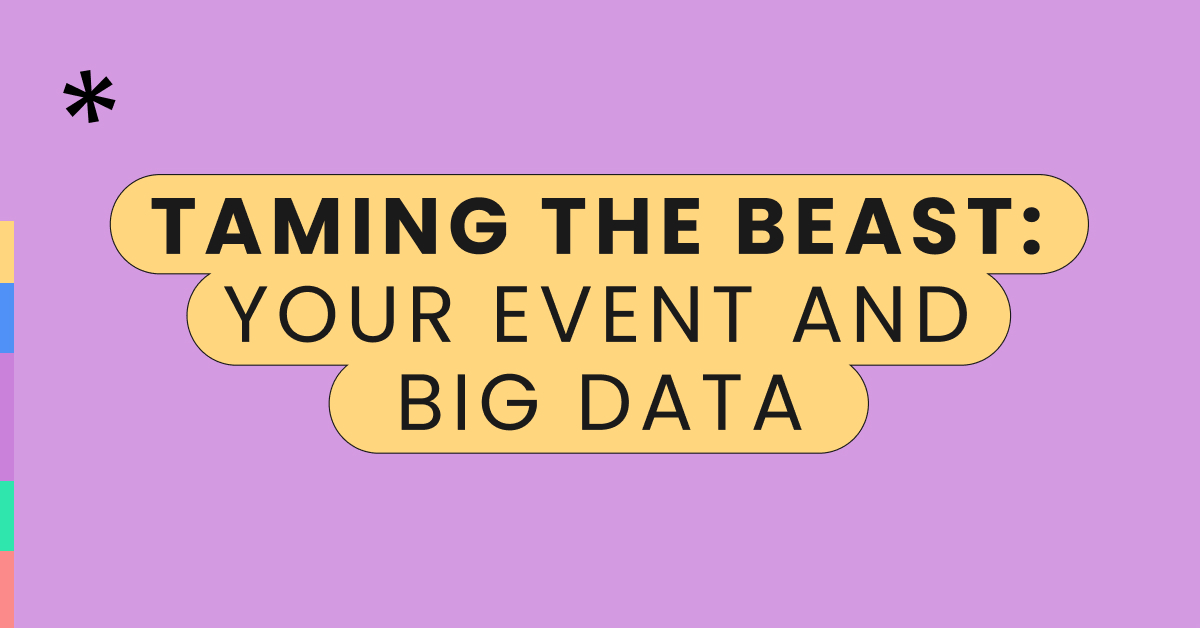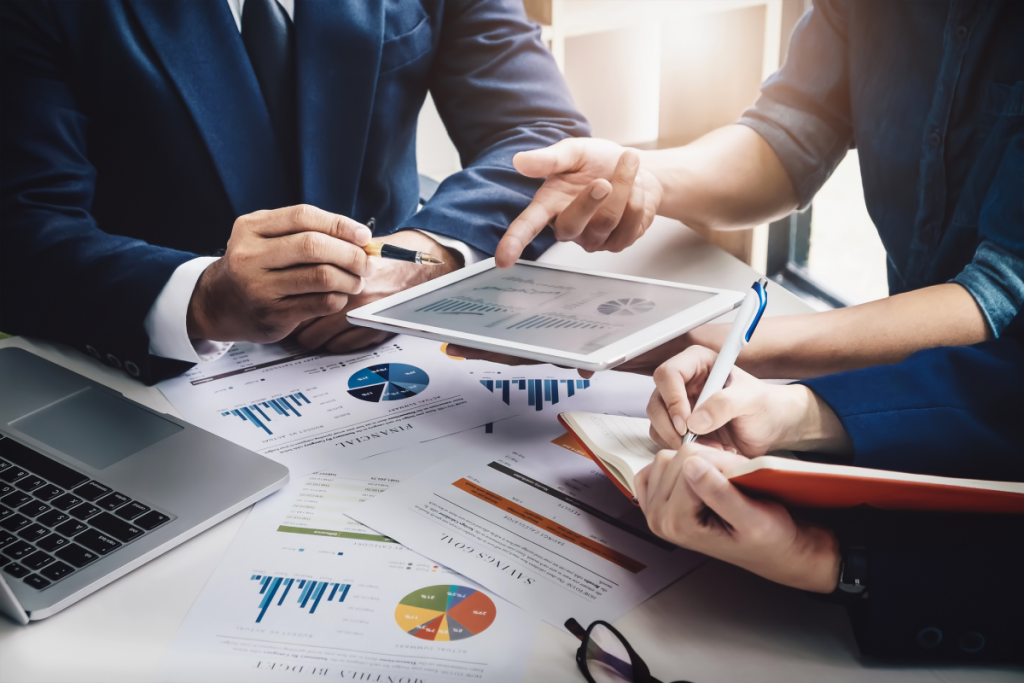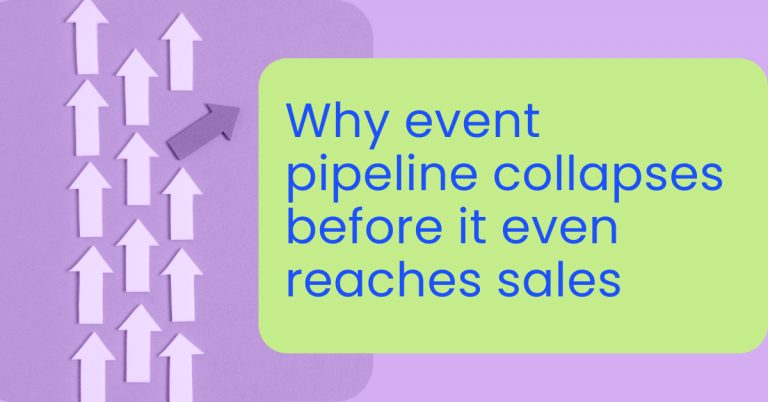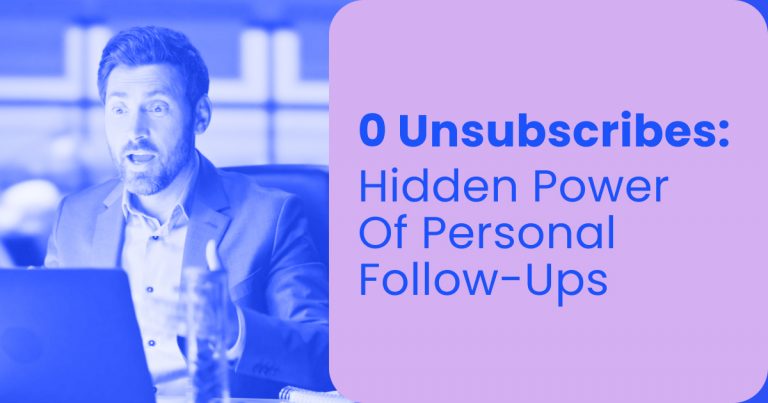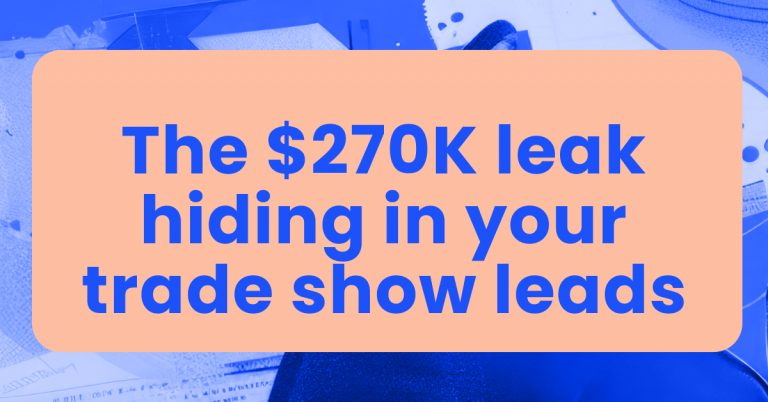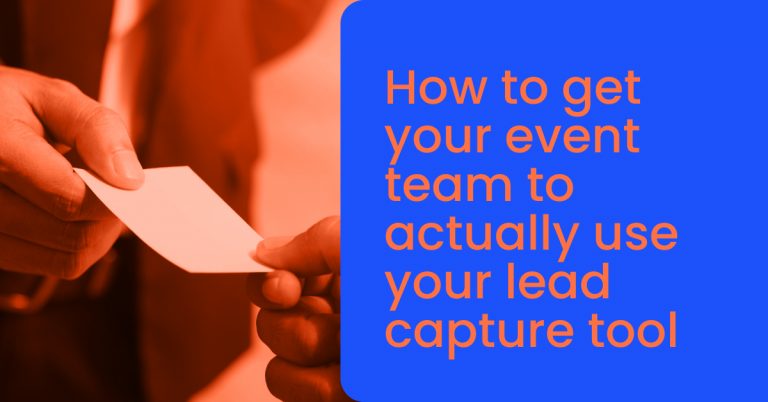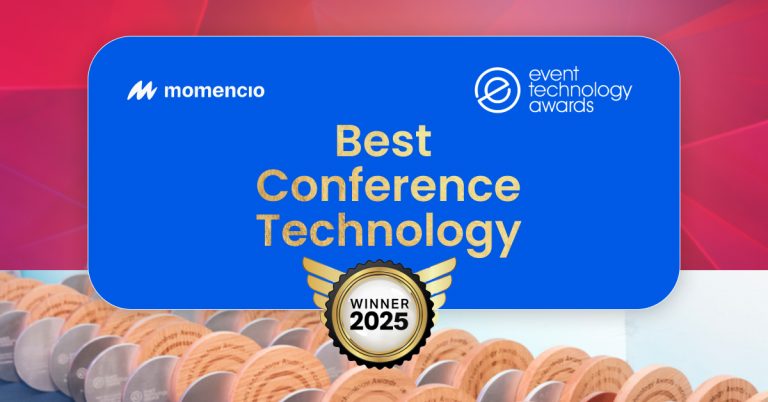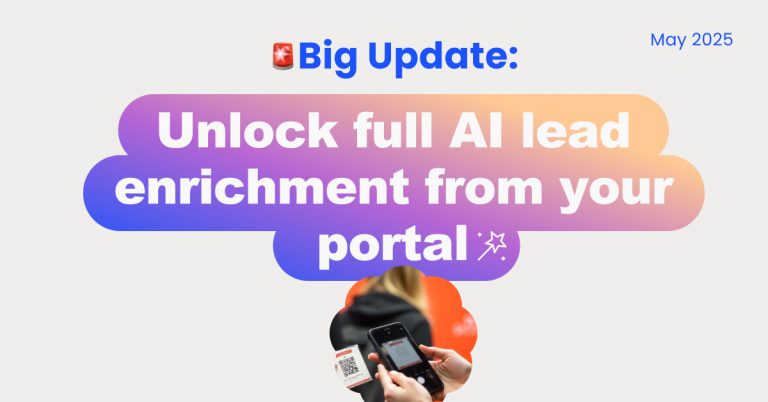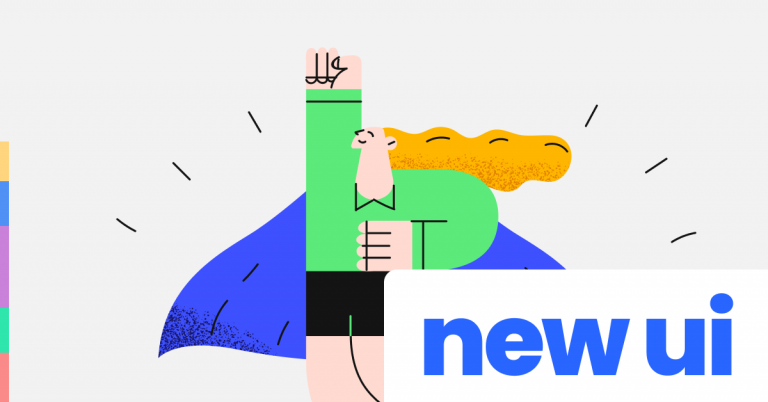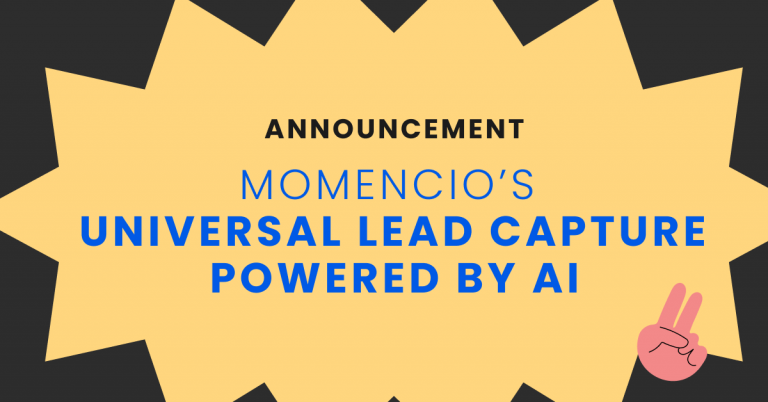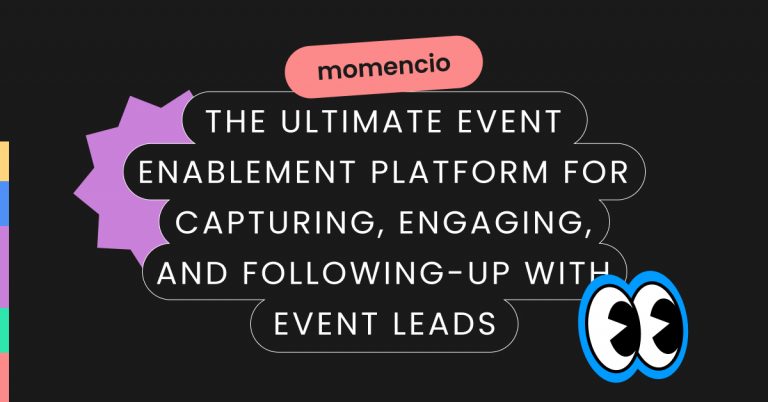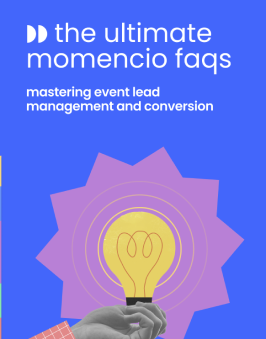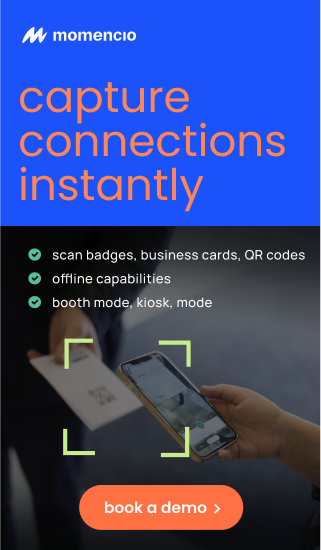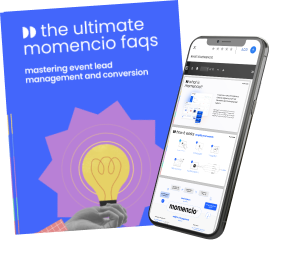Big data got you feeling down? We totally get it. But it doesn’t have to be that way anymore. The days of not knowing what to do with your company’s data post-event are gone (hallelujah). Now, we’re speaking a different language—the intelligent use of data through real-time analytics—allowing event professionals to once and for all retire the notion that interaction has to end when an event ends.
As Gartner, the world’s leading technology research and advisory company states, “Big data is high-volume, high-velocity and/or high-variety information assets that demand cost-effective, innovative forms of information processing that enable enhanced insight, decision making, and process automation.” So, let’s think. Why are the three-V’s of big data (volume, velocity, variety) important to your company? And how can harnessing them help you determine event ROI?
TL;DR: Managing big data from events can be overwhelming. This guide explains how to organize, analyze, and leverage large datasets to gain insights into attendee behavior, optimize lead follow-ups, and drive better event outcomes.
What is big data for event marketing?
Big data for event marketing refers to the vast volume of information gathered from various event-related sources—such as attendee demographics, behavior, preferences, and interactions—used to enhance marketing strategies, increase attendee engagement, and boost event ROI. The concept goes beyond simple data collection; it involves analyzing large datasets to uncover trends and actionable insights that can drive strategic decision-making.
In event marketing, big data includes multiple data sources, like real-time event analytics, engagement tracking tools, registration data, feedback forms, and social media activity. For instance, event marketers can track patterns in attendee engagement, determining which content or sessions were the most popular or which digital experience platforms for events contributed to the highest interaction levels. This helps tailor future events more effectively, as organizers can focus on high-performing elements that are proven to attract and retain audience interest.
Big data also encompasses predictive analytics, a powerful tool in event strategy and optimization. By analyzing historical data, marketers can predict attendee behavior, set realistic goals, and prepare proactive engagement strategies. For example, if past data shows high interest in hands-on demos, marketers can allocate more resources to interactive setups, knowing this tactic aligns with attendee expectations. In this way, predictive analytics enables high-conversion lead strategies by anticipating and preparing for attendee needs.
For exhibitors and sponsors, big data offers insights that enable high-quality lead capture. By analyzing attendee profiles and engagement history, marketers can segment leads based on factors like industry, budget, and interest level, ensuring follow-up communications are personalized and relevant. This segmentation is particularly effective when using CRM systems integrated with event data, enabling effective CRM usage at events to track, score, and prioritize leads.
Another core component of big data in event marketing is sentiment analysis, which allows event planners and marketers to gauge attendee sentiment through social media and survey responses. Sentiment analysis is particularly useful for measuring long-term impact of event attendance since it captures audience reactions, helping organizers adjust their tactics to enhance satisfaction.
Overall, big data for event marketing helps planners improve every stage of the event experience, from conference planning tools to post-event analysis and growth. By tapping into this wealth of data, event marketers can drive engagement, optimize operations, and achieve better outcomes for stakeholders and attendees alike.
How does big data apply to event marketing?
Big data applications in event marketing provide immense potential for creating personalized experiences, enhancing engagement, and optimizing follow-ups. Here’s a deeper look at the primary ways big data transforms event marketing:
1. Personalization and attendee engagement
Personalization is at the heart of successful event marketing, and big data enables a high level of customization that aligns with attendee preferences. By analyzing data points collected through registration, pre-event engagement, and on-site interactions, event marketers can tailor the experience to individual needs. This approach ensures that each attendee feels valued and catered to, which boosts engagement and helps achieve high-conversion lead strategies.
For example, big data for event marketing allows marketers to craft individualized schedules, recommend sessions, and suggest networking opportunities based on attendee profiles. Many events use data from mobile apps or badge scans to guide attendees toward relevant sessions, increasing the likelihood of participation and satisfaction. This data-driven approach not only improves the attendee experience but also helps exhibitors achieve lead capture strategies by connecting them with attendees most aligned with their offerings.
2. Optimizing content and booth engagement
Big data insights help event marketers refine their content to meet attendee interests. Through event performance measurement and tracking tools, marketers can assess which types of content—whether workshops, keynotes, or demos—drive the highest engagement levels. For example, if data indicates that interactive workshops receive the most traffic, marketers can prioritize similar sessions in future events.
In addition, big data allows for real-time adjustments in booth engagement tactics. Exhibitors can analyze foot traffic, dwell time, and interactions at specific booths to identify which strategies attract high-quality leads. This data helps them apply strategies for effective booth design and adjust layouts, displays, and product presentations to better capture attendee interest. In-booth data analysis also supports high-conversion lead strategies by revealing which elements foster meaningful interactions, ensuring exhibitors focus on engaging tactics that attract conversion-ready prospects.
3. Enabling real-time decisions through analytics
Real-time data empowers event planners to make quick adjustments that enhance the event experience on the spot. For example, if an event app shows a surge in traffic to certain sessions, organizers can adjust seating, provide additional resources, or promote similar sessions to maintain engagement.
Similarly, real-time event insights help exhibitors and marketers refine their tactics based on ongoing performance metrics. When exhibitors monitor data like engagement rates and interactions, they can see which leads are most engaged and prioritize immediate follow-ups. This agile approach ensures that high-potential prospects are nurtured on-site, increasing the likelihood of immediate conversions. Real-time analytics, therefore, serve as a cornerstone of high-conversion lead strategies, allowing for instant adjustments that maximize attendee satisfaction.
4. Improving post-event follow-up and lead nurturing
The power of big data for event marketing extends beyond the event itself, particularly in the follow-up phase. After the event, data gathered from various touchpoints—such as interactions at booths, content engagement, and feedback surveys—provides a complete profile of each lead. Marketers can segment leads based on their engagement levels, interests, and readiness to buy, which enhances the effectiveness of post-event follow-up tactics.
For instance, a lead who showed high interest in specific sessions or demos can be followed up with targeted content that speaks directly to their needs. By implementing marketing automation for event follow-ups, marketers can create tailored campaigns that nurture leads at different stages of the funnel. Personalized email sequences, exclusive content, or demos keep these leads engaged, increasing the likelihood of conversion. In this way, big data not only facilitates more meaningful follow-ups but also strengthens sales pipeline acceleration post-events.
5. Predicting future event trends and optimizing strategy
Finally, big data enables event marketers to predict trends and optimize strategies for future events. Through historical data analysis, planners can identify trends in attendee preferences, engagement patterns, and successful booth designs. This predictive insight helps shape event strategy and optimization, allowing for better planning and more strategic investments in high-impact areas.
For example, data may reveal a steady increase in interest in digital and hybrid experiences, prompting event planners to allocate resources toward digital experience platforms for events. Similarly, if certain engagement tactics consistently drive high conversions, planners can prioritize these tactics in future events. Predictive analytics thus empowers event organizers to stay ahead of market trends and continuously improve event ROI optimization.
Your event and big data
When you are representing your company at an event or trade show, the sheer volume of attendees, not to mention their collective information, can feel overwhelming, right? Think about it. Each lead captured possesses a variety of likes, dislikes, interests, engagements, purchases, etc. Now, you can see the volume and potential overload of information if the ability to process this data is not in place.
Next-generation lead-retrieval platforms for trade shows take the guessing out of “what to do next?” with your customers. In fact, our friends over at Meetings & Conventions, a Northstar Travel Media Site, say, “The ability to get real-time data and take action on it during a trade show is a game changer.”
Now, you can start capturing valuable information from the very beginning of an event. Starting with a simple badge scan at your booth, you can begin tracking your visitors and their engagement with your brand materials. It sounds like rapid-fire data coming into us, and that’s the velocity at which big data works. Remember that MTV show True Life? Well, “You think you know, but you have no idea.” The same goes for the speed of data. It comes in faster and, in many cases, more complex than we ever thought possible.
And, since we all know that each customer has their own tailored needs and wants, no two people are the same, and that shows in the data, too. The variety of data available is exponential, and how to close the sale greatly depends on a company’s ability to constantly evolve its marketing tactics in a strategic, data-driven way.
Beyond the booth
Big data is an invaluable tool in terms of client relationship management and how a company tailors its marketing to offer the best solutions to a customer’s needs. Access to clean, transparent information affords your sales team the opportunity to build business relationships based on cold, hard facts – not guesses. The newest wave of lead-retrieval platforms, can now collect and process previously fragmented contact details to ensure you follow-up at the right moment with the right message.
Wouldn’t it be awesome to have clear-cut engagement metrics to assist your efforts, instead of a stack of business cards and cold-calls to make? Big data can seem daunting, as we know first-hand! But in all seriousness, big data can and will help you determine event ROI by letting you know if your best efforts were truly successful.
So…
Stop freaking out about big data! With the proper business intelligence tool, it doesn’t have to be that way any longer. Take control of the pesky three-V’s of big data. Start making calculated decisions for your business by implementing a lead retrieval platform, like momencio, that goes beyond the booth at your next event. You won’t regret it and your bottom-line won’t, either.
Conclusion
The role of big data for event marketing has transformed the way event professionals plan, execute, and analyze events. By leveraging vast datasets and real-time insights, event marketers can deliver personalized, engaging experiences that resonate with attendees and drive conversions. From optimizing booth design and enhancing lead capture to implementing data-driven follow-up tactics, big data empowers marketers to make informed decisions at every stage of the event lifecycle. By embracing these data-centric strategies, event organizers not only boost event ROI but also create a framework for ongoing improvement, setting the stage for sustained success and stronger attendee relationships.
Whether it’s real-time adjustments, personalized content, or predictive insights, big data offers tools that make every event more impactful and every lead more valuable. As the industry evolves, big data for event marketing will remain a powerful asset, enabling brands to maximize the potential of every event, build lasting relationships, and stay ahead in a data-driven world.
FAQs
- What is big data for event marketing, and why is it important?
- Big data for event marketing refers to the extensive data collected from attendee interactions, behaviors, and feedback, analyzed to improve marketing strategies. It’s important because it provides insights that enable event professionals to create personalized experiences, enhance engagement, and optimize ROI.
- How can big data help with event lead generation and conversion?
- Big data helps with lead generation by providing insights into attendee preferences and behaviors, allowing marketers to create high-conversion lead strategies. Through data-driven segmentation and personalization, event organizers can engage the right prospects and nurture them with targeted follow-ups, increasing the likelihood of conversion.
- What are some examples of big data applications in event marketing?
- Examples include using real-time event insights to adjust booth setups, employing predictive analytics to forecast attendee preferences, and leveraging CRM systems to capture enriched lead profiles. Additionally, big data enables personalized marketing, where each attendee receives tailored content based on their interests and engagement history.
- How does big data improve post-event follow-up?
- Big data enhances post-event follow-up tactics by providing detailed profiles of each lead, allowing for personalized outreach. Marketers can segment leads based on their engagement level and interactions, using targeted emails, exclusive content, and product demos to keep leads engaged and increase the chance of conversion.
- What tools are used to gather big data for event marketing?
- Common tools include CRM systems, analytics tools for measuring event success, event management software, and mobile event apps. These tools capture data on attendee demographics, engagement, sentiment, and feedback, which are then analyzed to inform future event strategies and maximize ROI.
